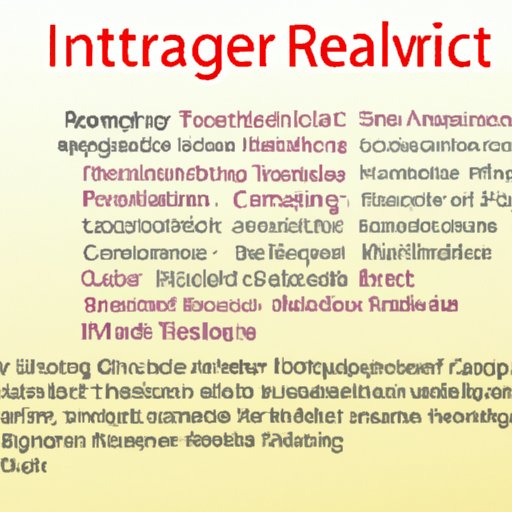Introduction
A literature review is a critical evaluation of existing research on a given topic. It involves reading, analyzing, synthesizing, and summarizing published material to gain an understanding of the current state of knowledge, identify gaps in research, and develop new lines of inquiry. A comprehensive literature review can provide an invaluable resource for researchers by illuminating the existing body of research, identifying trends, and suggesting areas for further exploration.
Problem Statement
The purpose of this article is to provide an overview of the literature review process and its importance in understanding current research. Additionally, it will offer insights into key findings, trends, and implications for future research.
Summary of Current Research
The literature review process begins with a thorough search of existing research. This includes reading and analyzing published material such as books, journal articles, conference proceedings, and other sources. Through this process, researchers can identify key findings and trends in the field.
Quality Assessment
Once the literature has been reviewed, researchers must assess its quality. This includes evaluating the relevance, accuracy, and reliability of the material. It is important to consider the author’s credentials, the date of publication, and the sources used. Furthermore, researchers should consider the objectivity and bias of the material.

Comparison and Contrast of Theories or Methods
In some cases, researchers may need to compare and contrast different theories or methods related to their specific research question. For example, if a researcher is exploring the effectiveness of different teaching strategies, they may need to compare the efficacy of traditional teaching methods versus more innovative approaches. By comparing and contrasting different theories or methods, researchers can gain a better understanding of the literature and identify any gaps or contradictions.
Identification of Gaps or Contradictions
As part of the literature review process, researchers must identify any gaps or contradictions in the existing research. This includes looking for inconsistencies between different studies or conflicting evidence. By doing so, researchers can develop new questions and hypotheses for further exploration.
Overview of Major Works
When conducting a literature review, researchers should also consider the major works in a particular field or on a specific topic. For example, when researching the impact of social media on education, researchers should familiarize themselves with the seminal works in the field, such as Mark Prensky’s “Digital Natives, Digital Immigrants” (2001) and Clay Shirky’s “Cognitive Surplus” (2010). In addition, they should review recent publications to get a sense of current trends.
Conclusion
In conclusion, a comprehensive literature review is an invaluable resource for researchers. It allows them to gain an understanding of the current state of knowledge, identify gaps in research, and develop new lines of inquiry. Key findings and trends can be identified, existing literature can be reviewed, theories or methods can be compared and contrasted, and gaps or contradictions can be identified. Finally, researchers should be familiar with the major works in a particular field or on a specific topic.
(Note: Is this article not meeting your expectations? Do you have knowledge or insights to share? Unlock new opportunities and expand your reach by joining our authors team. Click Registration to join us and share your expertise with our readers.)
